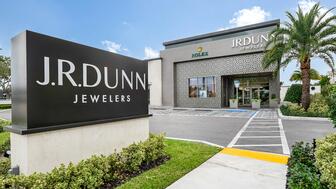Google Ads Payment Policy Change: What It Means For You
The change to accepted payment methods for Google Ads might seem like an irritation but actually is an opportunity, Emmanuel Raheb writes.

Google’s latest payment policy change is a perfect example of how quickly things can change.
In June, Google notified certain advertisers that it will no longer accept debit and credit cards as payment options for Google Ads, effective July 31.
This includes PPC (pay-per-click), display/retargeting, shopping, and all other ad formats the company offers.
To comply with Google’s new policies, advertisers must switch to bank-based payment options. These include wire transfers and payment by check (through monthly invoicing), which provides you with a 30-day payment window.
You can also set up automatic payments through direct bank debit. Though available only in certain regions, this option ensures your account stays current without the need for manual intervention.
Delaying making the switch could mean disruptions in your Google Ads.
If your account isn’t updated to one of these new payment methods, you risk suspension, which will affect your ability to reach potential customers, a disruption no jewelry business can afford.
Let’s dive into what this new policy means for you and how you can make the most of it.
Google’s decision to phase out debit and credit card payments for many advertisers using Google Ads signals that things are tightening and that the digital advertising landscape is in flux.
While this change currently impacts only a select group, it’s expected to become the norm soon and will impact everyone, including you.
Don’t be caught off guard when these policies become universal. If you haven’t made the change yet, now is the time to act.
At first, the change might feel like an inconvenience, another obstacle to overcome, but it can be an opportunity in disguise.
By moving away from credit cards, you will cut down on those pesky processing fees that eat into your budget. These fees might seem minor, but for any jewelry business running a lot of campaigns, they can add up quickly.
Think about what you could do with those savings.
You could reinvest them into expanding your inventory, upgrade the customer experience at your store, or launch a new marketing initiative.
This isn’t just about switching payment methods; it’s about making every dollar work harder for your jewelry business and that starts with controlling your costs.
The change from Google should be looked at as a positive one because it makes you more disciplined about making every penny count.
There’s another big benefit here—predictability.
Monthly invoicing gives you a clear, consistent timeline and helps you to better manage your store’s finances.
Also, when you use a bank-based payment method, you gain financial stability, which allows for better planning, smoother operations, and less stress. No more worrying about juggling multiple credit cards, changing billing dates, interest payments, and/or late fees.
Don’t wait until Google forces your hand. You need to get ahead of this change now.
By making the switch today, you ensure that your ad campaigns will continue without interruption. Be proactive about it.
As you make this transition, it’s also a good time to consult with your digital marketing team or agency.
They can help make sure that you follow Google’s policies and your switch to a new payment method is as smooth as possible, and that you’re taking full advantage of any other incentives or benefits Google has to offer.
For example, if you’re planning a major campaign for the fall season and/or Black Friday (Nov. 29), you’ll want to make sure your payment processes are set up properly and streamlined to avoid any disruptions.
In digital marketing, you always need to be looking forward. Change is inevitable; it’s how you respond to it that will set your jewelry business apart.
Remember, this isn’t just about doing what Google wants you to do.
It’s about doing what’s in the best interest of your store and keeping your digital marketing ads running while your competitors’ ads go dark. Simply put, it’s a smart move.
As a Google Premier Partner, Smart Age Solutions is equipped to help your business not only understand these changes but use them to your advantage. We have a team of experts fully focused on strategic planning, financial management advice, and giving your business the continuous support it deserves.
Reach out to us today at info@smartagesolutions.com for a consultation or more information, so that we can help your business reach its full potential.
We’re ready to help you succeed.
The Latest

Set in a Tiffany & Co. necklace, it sold for $4.2 million, the highest price and price per carat paid for a Paraíba tourmaline at auction.

The jeweler’s “Deep Freeze” display showcases its iconic jewelry designs frozen in a vintage icebox.

Take luxury gifting to new heights this holiday season with the jeweler’s showstopping 12-carat sphene ring.

How Jewelers of America’s 20 Under 40 are leading to ensure a brighter future for the jewelry industry.

This year's theme is “Unveiling the Depths of the Ocean.”


In its annual report, Pinterest noted an increase in searches for brooches, heirloom jewelry, and ‘80s luxury.

Starting Jan. 1, customers can request the service for opal, peridot, and demantoid garnet.

Roseco’s 704-page catalog showcases new lab-grown diamonds, findings, tools & more—available in print or interactive digital editions.

The 111-year-old retailer celebrated the opening of its new location in Salem, New Hampshire, which is its third store in the state.

The new catalog features its most popular chains as well as new styles.

The filmmaker’s personal F.P. Journe “FFC” prototype was the star of Phillips’ recent record-setting watch auction in New York.

The new location in the Design District pays homage to Miami’s Art Deco heritage and its connection to the ocean.

Inflations, tariffs, and politics—including the government shutdown—were among consumers’ top concerns last month.

“Longtime favorite” presenters, as well as first-time speakers, will lead talks and workshops at the annual event in Tucson next year.

Silas Smith of Meridian Metalworks won the challenge with his pendant that blends Australian and American landscapes.

The sale of the 31.68-carat, sunset-hued stone was part of Sotheby’s first series of events and auctions in Abu Dhabi.

The collection features characters and motifs from Ukrainian folklore, including an enchanted mirror and a magic egg.

MatrixGold 3.11, the newest version of the jewelry design program, offers more flexibility, precision, and creative control.

The pavilion will be part of the 2026 JA New York Spring show, scheduled for March 15 to 17.

Kadet, a 1994 National Jeweler Retailer Hall of Fame inductee, helped grow the family-owned retailer in the Chicago area and beyond.

Billed as the world’s smallest wearable, Lumia Health’s new smart earrings have a health tracker subtly embedded in the back.

Don’t let those with December birthdays feel blue. Help them celebrate their month with blue zircon, turquoise, and tanzanite.

The new pink sapphire version of the piece dances with its wearer in the brand’s “Icons After Dark” holiday campaign.

A choice that’s generated a lot of commentary, Pantone says “Cloud Dancer” marks a fresh start and encourages relaxation and creativity.

The manufacturer’s holiday campaign features a gift guide filled with trending designs and jewelry that can be personalized.

The man was charged with theft, accused of ingesting the necklace while in a jewelry store in Auckland, New Zealand.

The Florida independent expanded its store from 8,000 to 14,000 square feet, fulfilling the vision of its late co-founder, Jim Dunn.





























